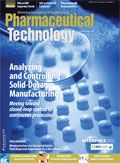Report from Thailand
The Thai government is ramping up efforts to promote and develop the biotechnology sector in a bid to enhance its global competitiveness.

Giorgio Fochesato/Getty ImagesThailand’s biotechnology sector was given a boost when the drafting committee for the National Social and Economic Development Plan No. 11 decided to include it as part of the national plan for 2012 to 2016. The initiative received strong support from researchers, scholars, and related sectors considering the slow development of the biotech sector in Thailand, and also because such technology development will contribute to the country’s economic growth.
Thailand's forte is in agriculture and food biotech followed by medical technology, says Hannah Nawi, associate director for healthcare of Frost and Sullivan. Seventy percent of R&D expenditure is being channeled to agricultural biotechnology. According to Nawi, the average export of agricultural and food products is valued at -23 billion.
Slow growth in biotechnology
The development of the biotech sector has, however, been slow in Thailand compared to Singapore and Malaysia. Last November, Malaysia attracted a total of $4.2 billion in biotech investment, exceeding the -2.9-billion target for its Phase ll plan under the National Biotechnology Policy. Phase II focuses on biotechnology sub-sectors including drug discovery, new product development, technology acquisition, and licensing. Malaysia has consequently raised its 2015 investment target to US-8.5 billion. Singapore’s biomedical sector, on the other hand, is already accounting for 5% of its economy. In 2010 alone, the country generated -7.5 billion compared to Thailand’s -167 million.
"Thailand’s biotechnology sector is hampered by the lack of scientific professionals, technological skills, and government support, although it appears that there is a strategic framework in place. Moreover, the key downside risk to biotechnology investment is the long incubation period. The risk of failure is high and investors’ confidence is typically tied to the probability of success," commented Cher Boon Piang, analyst of Business Monitor International (Asia). Nevertheless, the current outlook has not discouraged the Thai government from increasing its support and involvement in the sector.
Over the years, agencies such as Thailand Board of Investment (BOI) and National Center for Genetic Engineering and Biotechnology (BIOTEC) have been playing a proactive role in developing Thailand’s biotech sector. When BOI started promoting biotechnology in 2007, it came up with an eight-year corporate tax exemption and tariffs waiver on imported machinery. It also granted incentives to projects. In 2008, eight new projects worth -9 million received the thumbs-up for such benefits.
BIOTEC, on the other hand, channelled approximately -$21 million to R&D activities in 2011. It collaborated with Novartis on a project to investigate the potential use of microorganisms and natural compounds as sources of new medicines to treat diseases such as cancer and tropical illnesses. Besides that, it assisted the Thai-based environmental and research company, Hi-Grimm, to launch KEEEN in 2010. KEEEN is an environmentally friendly bioremediation agent that uses microorganisms to eliminate hydrocarbons, fats, grease, and organic substances from contaminated areas. Hi-Grimm is currently producing and commercializing the final product.
Investing in biotechnology
Thailand is also building up its talent base, which is necessary for the sector’s growth. On a yearly basis, it is producing 800 to 900 undergraduates pursuing a biotech degree, 300 to 400 individuals with Master’s degrees, and 50 with doctorates across its 24 universities. Key statistics from BIOTEC show that of the 570 workers employed in the biotech sector, 539 are graduates, or postgraduates, and 472 are R&D scientific staffs. From a business perspective, Thailand has approximately 200 biotech companies in operation to date and the doors are opened for multinational companies to acquire or license Thai-based technologies. The Thailand Science Park, a world-class facility, houses more than 1600 full-time researchers. Its attractive features include long-term land leases for construction and ready-made wet laboratories for rent.
In February 2012, the Thai minister of public health expressed support for the Government Pharmaceutical Organization who is in the process of building a manufacturing facility for biotech and non-biotech products. Helen Featherstone, general manager of IMS Health Thailand, says: “In my opinion, Thailand’s biotech sector will only start to develop within the next 10 years. Since the supply of these products will remain within the country’s perimeters, foreign companies are likely to continue importing biotech products from other countries. On the other hand, local players are facing issues including governmental policy changes, increases in minimum wage, and pressure on pricing.”
All is not lost for Thailand’s biotech sector, although it is not likely to compete with Singapore and Malaysia given its current developmental stage. Cher says, “Thailand should find some niche sub-sectors to invest in. It has seen some success in microbial-based research so far and should look further into it given the high burden of tropical diseases in the country and its neighboring ones including Myanmar, Cambodia, and Vietnam.”
Nawi adds, “Further development of the medical biotech sector lies in the country’s competitive edge as a provider of clinical trials. Thailand offers fast patient enrollment with lower dropout rates, higher patient concentration per trial site, and a less expensive workforce to conduct the trials. It also has a well-developed hospital system to conduct the trials. Looking forward, we are likely to see interesting changes and developments in the coming years. But the government has to ensure that conductive policies and regulations are implemented to support the potential growth of the country.”
—Jane Wan is a freelance writer based in Singapore.
IMPORTANT FACTS
- Under Thailand’s first National Biotechnology Policy Framework (2004 to 2009), 90 new companies were formed, bringing the number of biotech companies to an estimated total of 170.
- Thailand has succeeded in producing the world’s first commercial biosensor for avian influenza.
- Currently, it is in the process of producing its first indigenous drug to treat malaria. If successful, it will be a breakthrough development that puts Thailand on the world map.
- Thailand is regarded as a prime “pharmerging market” due to the potential of its biotech sector.
- The large population and academic/healthcare infrastructure make the country an ideal provider of clinical trials.
